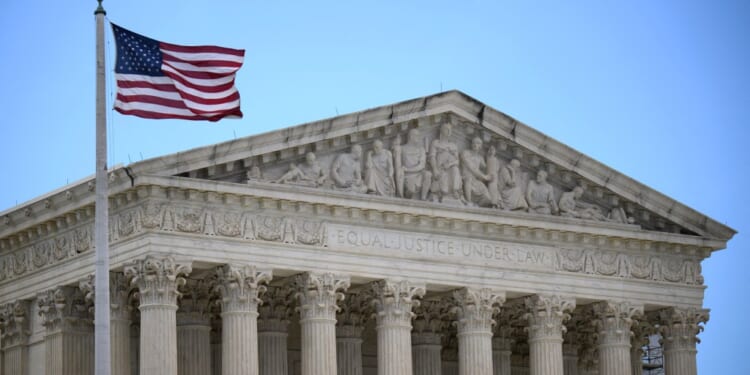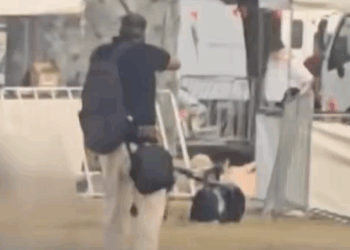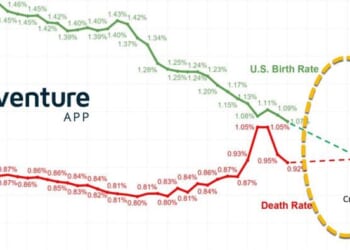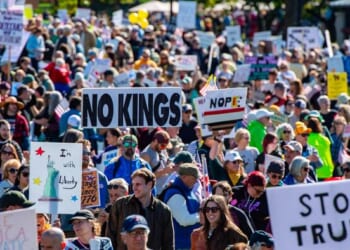
Solicitor General D. John Sauer opened his defense of the Trump administration’s “Liberation Day” tariffs as the president would have wanted. He quoted President Donald Trump’s insistence that the nation faces “country-killing” emergencies and emphasized the executive’s broad authority to impose tariffs to avert “an economic and security catastrophe” and “public health crisis.” But things went downhill for the president after the opening statement, as most of the justices seemed wary of Sauer’s sweeping claims.
At the core of the argument in Learning Resources Inc. v. Trump is whether Congress, in enacting the 1977 International Emergency Economic Powers Act (IEEPA), delegated to the president the near-unlimited authority to impose tariffs on trade with foreign nations any time the president is willing to claim an emergency requires it. Under IEEPA, the president is authorized to “regulate … importation … of … any property” from foreign nations in order to deal with “any unusual and extraordinary threat, which has its source in whole or substantial part outside the United States,” once the president declares the existence of a national emergency. This is an unquestionably broad foreign policy power. The question is whether it includes the authority to impose and set tariffs, and can be used to circumvent the procedures and constraints contained in those statutes expressly authorizing tariffs.
Throughout the argument, justices across the bench expressed skepticism that IEEPA granted presidential authority to impose any tariffs in any amount on any nation, provided an emergency has been declared. Sauer cited Dames & Moore v. Regan, which upheld the use of IEEPA to impose measures against the revolutionary government in Iran, to support his claim that Congress had delegated “robust powers” to the president to address emergencies. The 1981 decision, Sauer insisted, “held that IEEPA’s sweeping and unqualified language grants the president’s actions the strongest presumption of validity and the widest latitude of judicial interpretation.”
This assertion prompted a stern interjection from Chief Justice John Roberts: “Counsel, you—you’ve already mentioned Dames & Moore three times, which surprises me a little because the court in Dames & Moore went out of its way to say that it was issuing a very narrow decision it pretty much expected to apply only in this case.” And if anyone in the courtroom was well versed in Dames & Moore, it was the chief justice, who clerked for Justice William Rehnquist during the term Dames & Moore was decided and reportedly worked on the decision.
The questioning of Sauer did not get any easier after that exchange, as justices forced him to focus on the text of IEEPA and the lack of any language suggesting the delegation of revenue-raising authority. Justice Amy Coney Barrett posed a particularly incisive question, asking Sauer to identify “any other place in the [U.S.] Code or any other time in history” where the phrase “regulate importation” had been understood to authorize the imposition of tariffs, save for an “intermediate appellate court” decision upholding President Nixon’s imposition of temporary tariffs to address balance of payments concerns under the Trading With the Enemy Act.
Despite his insistence that IEEPA’s language had long been understood to confer such broad authority, Sauer came up empty, falling back on examples showing tariffs could be imposed for a regulatory purpose. As Justice Brett Kavanaugh subsequently explored, and lawyer Neal Katyal emphasized in his turn at the podium on behalf of the small businesses, the Nixon administration had not claimed the language of regulating imports as the source of authority for its actions when the tariffs were imposed, and Congress elsewhere ensured that equivalent authority could be exercised without resort to IEEPA.
Even if the text of IEEPA could be read to authorize sweeping tariff authority, the respondents argued that such a broad grant of authority could violate the nondelegation doctrine or implicate the sort of “major question” that Congress should address explicitly. Such concerns were key in recent court decisions striking down Biden administration efforts to forgive student loans and impose greenhouse gas regulations.
While Sauer insisted that the case need not raise such nondelegation or major questions concerns, justices noted that current nondelegation doctrine jurisprudence is anchored in a case concerning the imposition of tariffs—J.W. Hampton Jr. & Co. v. United States—and that the power to impose global tariffs would by any definition constitute a “major question” of profound economic and political significance. Can it really be contended that Congress granted presidents the authority to rewrite tariff schedules from the ground up without ever saying so explicitly? On this subject, Justice Neil Gorsuch backed Sauer into a corner, forcing him to concede that, by the logic of the solicitor general’s argument, Congress could fully delegate to the president the authority not only to rewrite tariff schedules with every nation on the globe, but also every other element of the nation’s foreign policy, including the power to declare war. He also got Sauer to acknowledge that future presidents could also use IEEPA in extraordinary ways, such as to impose a 50 percent tariff on the import of gasoline-powered automobiles to address the threat posed by global warming. Sauer insisted that President Trump would never do such a thing, but acknowledged that such a use of IEEPA would seem to be permissible.
The justices also posed difficult questions to the respondents, largely focused on President Richard Nixon’s use of IEEPA’s precursor authorities. However much common sense would indicate that the Liberation Day tariffs exceed what Congress had in mind when enacting IEEPA, it does not necessarily follow that tariffs can never be used to “regulate imports” of foreign goods, nor is it clear where the line between permissible and impermissible uses of the statute should be drawn—a consideration that plays in the president’s favor. After all, if there is no clear judicially administrable line, that counsels deference to the executive branch, particularly in the context of foreign policy. On this basis justices challenged the respondents’ claim that IEEPA does not authorize tariffs at all. If IEEPA authorizes the “greater power” to suspend trade with foreign nations altogether, should it not also be understood to confer the “lesser power” to condition importation on the payment of a tariff? Perhaps not, Katyal argued, noting Congress has enacted multiple statutes authorizing the imposition of tariffs for various purposes, albeit with procedural requirements and other constraints.
Reading IEEPA not to authorize tariffs is the surest way to preserve the authorities outlined in other trade statutes and limit the threat of executive branch overreach. Congress would remain free in the future to grant a president additional tariff authorities, but should the president’s claim of tariff authority under IEEPA be upheld, Congress could only take this power back were it to assemble a veto-proof majority. This prospect seemed to concern some of the justices, even if they seemed reluctant to close the door on ever using IEEPA to impose tariffs in an actual emergency.
Almost none of the argument was devoted to parsing the differences between Trump’s across-the-board “reciprocal” tariffs and the specific tariffs adopted to induce foreign cooperation with anti-fentanyl efforts. Little attention was paid to the practicalities of undoing the tariffs should they be struck down. Justice Barrett queried whether holding the tariffs unlawful would create a “mess,” and received a less-than-fully-reassuring response from Katyal. The most straightforward answer is that there is an administrative process in place through which importers can seek refunds of wrongly imposed tariffs, and this process would be available should the tariffs be struck down, but it could still be time-consuming and may even prompt further litigation.
Despite President Trump’s constant pronouncements that his tariffs will raise trillions in revenue, and could even supplant the income tax, the solicitor general insisted that the tariffs were “regulatory tariffs, not revenue-raising tariffs” that would be “most successful” if they never raised any money at all. This pivot was necessary for Sauer to defend the tariffs as a tool of foreign policy, and not of fiscal policy. While tariffs may operate as a tax, insofar as they involve demanding payment from those who import goods into the country, Sauer insisted that they were only used to advance the nation’s foreign policy goals, with any revenue raised being a mere incidental benefit.
In the past, the court has been reluctant to place much weight on public statements by the president when evaluating the legality of federal government actions. In National Federation of Independent Business v. Sebelius, in which the Supreme Court upheld the Affordable Care Act, it did not matter that President Barack Obama had insisted that the Affordable Care Act’s individual mandate was not a tax. And in Trump v. Hawaii, the court refused to probe the sincerity of the first Trump administration’s justifications for barring immigration from multiple majority-Muslim countries despite Trump’s statements suggesting he wanted a “Muslim ban.”
The problem in this case, however, is that some of the relevant statements were in the government’s own brief to the court, including the president’s declaration that “because of the trillions of dollars being paid by countries that have so badly abused us, America is a strong, financially viable, and respected country again.” It is one thing to disavow statements made on the stump or to the press. It is quite another to disavow those filed with the court.
Had the president attended the argument in person, as he had previously threatened to do, he may have been heartened to hear his solicitor general repeat his pronouncements about the need for powerful tariffs, but also dismayed that the justices he appointed to the court did not seem wholly persuaded. While a majority of justices have been willing to insulate the president’s initiatives from lower-court orders on the interim docket, it seems unlikely that there are five justices willing to uphold the Liberation Day tariffs—though we will not know for certain until the court issues its opinion later this term.
















